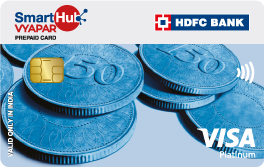In the fast-paced & continuously evolving world of stock market trading and investment, the Demat account has now emerged as a very important component of each trader’s life. ‘Demat’, short for dematerialised, is a digital account that holds all your shares and securities in one place. In this article, we are going to discuss the importance of opening an online Demat account, its benefits, and why you should take this step for financial development.

What is a Demat Account?
A demat account is your digital wallet for investments, comprising stocks, bonds, exchange-traded funds (ETFs), mutual fund units, and other financial instruments. It avoids the need for physical certificates, making holdings safer, easier, and more manageable.
Traditionally, investing in shares involved physical documents, often at risk of being damaged, stolen, or lost. Online Demat account have mitigated this risk and made investment more secure and hassle-free. Investors can now hold their securities electronically, track them easily and trade without geographical or temporal barriers.
Why Open Demat Account?
1. Security of Holdings:
The demat account keeps your securities safe, as physical documents are difficult to handle. Digital storage of shares is free from threats like theft, mutilation, or forgery.
2. Ease of Transaction:
Demat account clears the hassle that persists in trading shares, mutual funds, or bonds. With a press of a button, it completes buying/selling in seconds. Paperwork with this type of investment is largely reduced through automation.
3. Faster Settlements:
In the stock market, it is all about timing. Settlement cycles are much shorter with Demat accounts, and settlement happens in just two working days. The speedy settlement boosts liquidity and reduces delays.
4. Cost-Effective:
Operating an online Demat account lowers the transaction costs since there is no physical certificate to deal with or stamp duties to be paid. This also adds to a streamlined process with fewer overheads in reduction of paperwork.
5. Consolidation of Investments:
All your financial instruments can be held and tracked in a single account. A consolidated view makes things clear and allows for better decision-making.
Why does one need an Online Demat Account?
The most significant advantage with the digital revolution transforming all sectors is online opening of Demat account, which makes investors trade at their convenience from anywhere in the world and at any time-by mere logins through a user-friendly platform and app-and news of transactions and feedback from the market are only just a click away, meaning that, even to novice investors, the aspect of making more sense for trading arises.
Conclusion:
For a person who is interested in the stock market or any other security instrument, opening a Demat account is the only option. This facility has several benefits, such as security, speed, and cost efficiency, that have made it an indispensable tool for the investor of today. Online Demat account is the best option to avail the benefit of hassle-free real-time management of investments and to make the trading journey a pleasant one.







